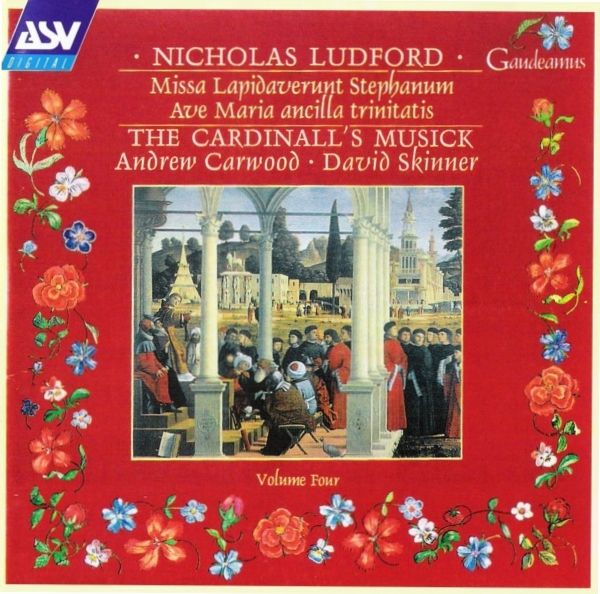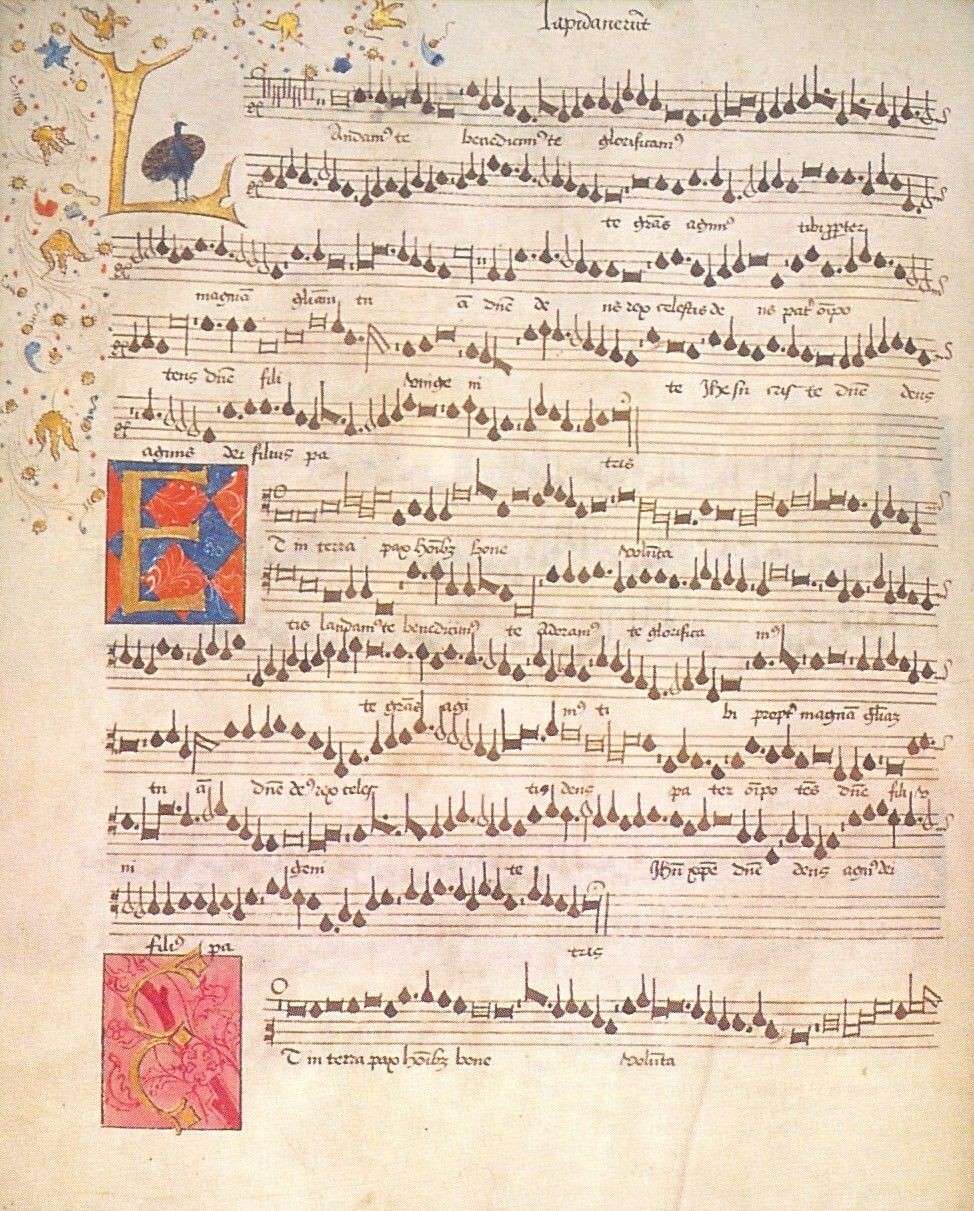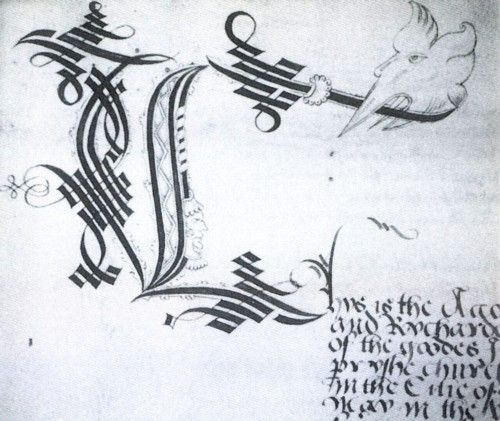Nicholas LUDFORD / The Cardinall's Musick
Missa Lapidaverunt Stephanum · Ave Maria ancilla trinitatis

AS&V Gaudeamus 140
1994
MISSA LAPIDAVERUNT STEPHANUM
with Plainsong Propers for the Feast of St Stephan
01 - Introitus. Etenim sederunt [4:40]
02 - Kyrie. Rex genitor [2:10]
03 - MISSA LAPIDAVERUNT STEPHANUM. Gloria [9:51]
04 - Gradualis. Sederunt principes [1:57]
05 - Alleluya. Video celos apertos [1:45]
06 - Sequencia. Magnus Deus [3:04]
07 - MISSA LAPIDAVERUNT STEPHANUM. Credo [8:37]
08 - Offertorium. Elegerunt apostoli Stephanum [2:17]
09 - MISSA LAPIDAVERUNT STEPHANUM. Sanctus · Benedictus
[10:19]
10 - MISSA LAPIDAVERUNT STEPHANUM. Agnus Dei [9:35]
11 - Communio. Video celos apertos [1:14]
12 - AVE MARIA ANCILLA TRINITATIS [13:13]
13 - Antiphona. Lapidaverunt Stephanum [0:37]

THE CARDINALL'S MUSICK
Andrew Carwood
Sopranos: Libby Crabtree, Carys Lane, Rebecca Outram
Altos: Robin Blaze, David Gould, William Purfoy
Tenors: Steven Harrold, Robert Johnston, Julian Stocker
Baritones: Matthew Brook, Simon Davies, Robert Evans, Charles
Pott, Matthew Vine
Basses: Jonathon Arnold, Robert Macdonald, Michael McCarthy, Adrian
Peacock
Plainsong only: Simon Davies, Charles Pott, Jonathon Arnold
Producer: David Skinner
Recording Engineer: Martin Haskell
Recorded in All Saint's Church, Petersham
Inside front cover: initial from a titlepage of the churchwarden's
accounts for St Margaret's, Westminster, when Nicholas Ludford was
churchwarden with Richard Castell (1552 - 54), Courtesy of Westminster City Archives
Front cover painting: "Debate of St Stephen" by Vittore Carpaccio
(c.1460/5 - 1523/6)
courtesy of Pinacoteca di Brera, Milan / Bridgeman
Photograph of The Cardinall's Musick: by Lucy Beeb
Back cover: Cambridge University Library, Caius MS 667, p.80:
opening of Missa Lapidaverunt Stephanum (Treble, Tenor, Alto)

THE WORKS OF NICHOLAS LUDFORD
Volume IV
The introduction of a composer into the recorded repertoire is often
accompanied with a fresh spark of academic interest. One immediately
recalls, for example, David Wulstan' s work on John Sheppard in the
1970s. Today, as ever, the early music movement continues to develop
and grow beyond the mainstream in search of things unknown and unheard.
In the case of early Tudor polyphony, the first 30 years or so of the
16th century has always been a grey area in terms of both available
recordings and academic literature. This is in no small way owing to
the severe lack of musical and archival sources from this period.
Nicholas Ludford has quickly emerged as one of the champions of these
musically nebulous years. Indeed part of his recent attraction has been
the seemingly anonymous nature of his life and work, and the amazement
at how such a gifted composer could escape public recognition for so
long.
A rebirth in Ludford scholarship was anticipated to follow from the
present series of recordings, although not as soon as has been
realised. Remarkably, around the same time that the scores were being
prepared for the present issue, a wealth of new source material was
discovered which provides a vivid and comprehensive reconstruction of
Ludford's movements in and around the palace of Westminster: included
amongst the archives in Westminster and the London Public Record Office
is a certificate of Ludford's employment at St Stephen's and a number
of documents which tell of his long and continuous association with the
parish church of St Margaret, including his last will and testament. We
now, in fact, have more information concerning Ludford's personal life
and musical career than we do about many of his better known
contemporaries. The following information briefly outlines these
discoveries.*
Ludford arrived in Westminster around 1525 when his name first appears
in the churchwardens' accounts for the parish church of St Margaret.
Nothing is yet known about Ludford's earlier years other than the fact
that he joined the Fraternity of St Nicholas in 1521 (a guild of London
parish clerks, but not necessarily resident in London), although it
would seem that his move to Westminster took place at the height of his
compositional powers and in the prospect of seeking employment in one
of the city's musical centres. Within two years of his arrival Ludford
gained a position in Henry VIII's royal free chapel of St Stephen,
which rested within the precincts of the king's palace. According to
his employment certificate, dated 30 September 1527, Ludford was
granted the offices of verger and chapel organist for life. He was not
the master of the choristers as has been previously assumed; it now
appears that this post was regularly occupied by one of the chapel's
singing men. John Calcost — possibly the composer, John Calcott,
whose work survives in the Peterhouse partbooks — is known to
have held it in 1535 (in 1545 Calcost was succeeded by Thomas Wallys,
who was only to be pensioned off two years later at the dissolution of
St Stephen's). It is not certain what Ludford's main duties as verger
were, however as the highest ranking chapel officer with a well-paid
annual income of 29 2s 6d he was probably in charge of chapel
maintenance, leading the processions, and possibly overseeing the
musical organisation of the daily offices. Interestingly, as organist
he received only 40 shillings in addition to his verger's salary.
Ludford was also heavily active in parish administration at St
Margaret's. He regularly maintained his pew there from 1525 and was
witness to several signings of the churchwardens' accounts between 1537
and 1556. He probably did not participate much in the music-making
there, although in 1533 the churchwardens paid him 20 shillings for 'a
pryke songe boke'. Between 1552 and 1554 Ludford was himself elected a
churchwarden of St Margaret's. These years witnessed the death of
Edward VI and the restoration of the Catholic faith under Mary. It was
also during this time that Ludford suffered the death of his first
wife, Anne, in 1552 and subsequently married Helen Thomas on 21 May
1554. He lived most of his life in Westminster in property on
Longwolstable Street which stood immediately outside the north wall and
gate of New Palace Yard (a short distance from the present clock tower
which houses Big Ben). Ludford died in 1557, possibly from the
influenza epidemic which raged in England at this time, and was buried
inside St Margaret's church on 9 August next to his first wife. His
will was proved on 22 November 1557, St Cecilia's Day.
It may have been shortly after Ludford's appointment to St Stephen's
that he composed his five-voice Mass Lapidaverunt Stephanum,
perhaps in gratitude for his placement there. Because of this
connection, it has generally been assumed that Lapidaverunt is
Ludford's earliest mass. The supreme quality and originality displayed
in all of Ludford's masses, however, seems to suggest that they were
all composed within a relatively short space of time, possibly during
his early years at St Stephen's. Some of Ludford's most inspired
writing may be sampled in his settings of the Agnus Dei; that in Lapidaverunt
is particularly fine, most especially at the words 'dona nobis pacem'.
Here repeating Eton choirbook-like melismas are lovingly set, with
harmonic invention which seems almost to anticipate 17th-century
practice. This is perhaps one of the most magical moments in the entire
corpus of early English polyphony.
The Marian prayer Ave Maria ancilla trinitatis was widely known
in early 16th-century England and circulated in several printed and
manuscript primers (the text was also set by the earlier composer
Edmund Stourton and Ludford's contemporary Hugh Aston). Although
Ludford's setting lacks its tenor part, the work is constructed on the cantus
firmus melody 'Inclina cor meum', which is deployed in the tenor
part of the sections for full choir, and therefore can confidently be
reconstructed. Ludford's Missa Inclina cor meum (similarly
missing its tenor) is also based on this plainsong melody and shares a
similar opening head-motif with Ave Maria ancilla trinitatis,
making them effectively paired works. However, whereas the plainsong
tenor is easily recognisable in the antiphon, it is less apparent in
the mass, suggesting that much of the missing part of the latter was
freely composed. The literary text of the antiphon is essentially a
litany of the virtues of the Blessed Virgin and, like other popular
texts from this period, is preceded by a rubric in several contemporary
sources, proclaiming that 'thys prayer was shewed to saint Bernard by
the messenger of God, saynge that as golde is moost precious of all
other metall soo exedeth thys prayer all other prayers: and who that
deuoutly sayth it shall have a singular rewarde of our blessyd lady and
her swete son iesus'.

Although this is the final instalment of Ludford in our present series,
it should be noted that his entire output is not represented on disc.
Seven complete Lady Mass settings (all for three voices) survive in a
unique source dating from around 1530; these functional works were
intended to be performed in the weekly cycle of masses for Our Lady,
probably in one of Westminster's Lady chapels. By the loss of one or
more partbooks there are also a number of works which exist only in an
incomplete state. Like Missa Inclina cor meum previously
mentioned, Ludford's Missa Regnum mundi also lacks its tenor
part as well as a large portion of the treble. Three out of five voice
parts survive for his antiphon Salve regina mater misericordie,
and we only possess the alto part for his Salve regina pudica mater.
A small fragment of Ludford's four-voice Missa Leroy survives,
and an inventory record tells us of a further three works which are
completely lost — the Masses Tecum principium, Requiem etemam,
and Sermone blando. It is only with the fortunate survival of
the Caius and Lambeth choirbooks (compiled and assembled in Westminster
sometime in the late 1520s or early 1530s) that we are able to sample a
substantial portion of Ludford's musical genius in its complete form
— in sources which were very possibly supervised by the composer
himself.
© 1994 David Skinner
* For further information, see At the mynde of Nycholas Ludford:
New light on Ludford from the churchwardens' accounts of St Margaret's,
Westminster' by David Skinner in Early Music, 22 (1994) p.393, no. 3
(O.U.P., August 1994), p-393.
SOURCES
Polyphony:
Missa Lapidaverunt Stephanum: Cambridge University Library,
Gonville and Caius MS 667, p.80; also in London, Lambeth Palace, MS 1,
p.172.
Ave Maria ancilla trinitatis: Cambridge University Library,
Peterhouse MSS 471-74, ff. 94, 85v, 105, 81 (Tenor 2 editorially
supplied).
Plainsong:
Oxford, Christ Church Library,
Graduale secundum morem et consuetudinem preclare ecclesie Sarum
politissimis formulis (ut res ipsa indicat) alma Parisiorum Academia
impressum (Paris, 1527). Antiphonale ad usum Sarisburiensis
(Paris, 1519).
Music edited by David Skinner, and published by The Cardinall's Musick
Edition





